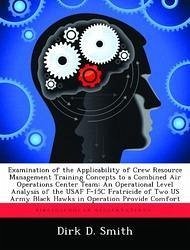Nicht lieferbar

Gentlemen We Are Out of Money-Now We Have to Think - Prioritization of Objectives in a Resource Constrained Environment
Versandkostenfrei!
Nicht lieferbar
This paper introduces a simple and effective analytical method for Senior Leaders and their staff to communicate their priorities more clearly through the Chain of Command and across organizations; the Decision Objective Prioritization (DOP) Matrix method. When leadership is prioritizing objectives there are two independent variables that should be considered: the importance of the objective and its potential for improvement. This set of variables produces the DOP Matrix. Priorities determined through the use of this matrix are far more beneficial to the organization and produce more useful in...
This paper introduces a simple and effective analytical method for Senior Leaders and their staff to communicate their priorities more clearly through the Chain of Command and across organizations; the Decision Objective Prioritization (DOP) Matrix method. When leadership is prioritizing objectives there are two independent variables that should be considered: the importance of the objective and its potential for improvement. This set of variables produces the DOP Matrix. Priorities determined through the use of this matrix are far more beneficial to the organization and produce more useful insights than any single dimension prioritization method. By discussing a current and relevant use of this process in the U.S. Army Pacific, a strong argument is presented for the integration of the DOP Matrix into decision processes throughout all levels of DoD as the standard method of establishing and communicating the leadership#65533;s priorities thereby clarifying their intent. This paper postulates that using the DOP Matrix method to quantitatively prioritize objectives will improve the quality of strategic decisions and allocation of resources throughout DoD. More so than in times of abundance, during times of limited resources, decisions are more highly scrutinized and must be publically defendable; the process described in this research provides the organization a logical, traceable manner to present and justify their decisions. The method is expandable or collapsible based on size of the problem, time required to make the decision and resources available. Finally, the proposed method combines both the subjective and objective approaches to decision making, incorporating the judgment and experience of leadership with proven techniques to ensure consistency and handle the complexities of multi-dimensional decisions.














